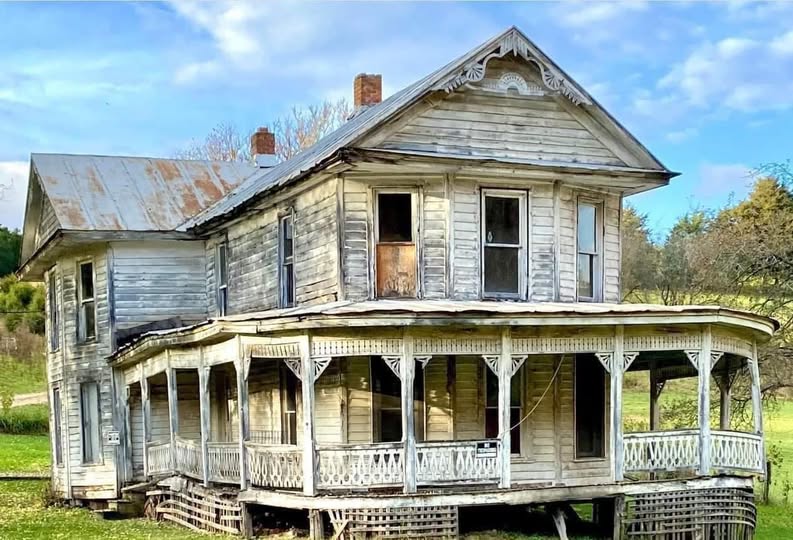In the heart of York, Pennsylvania, a once-forgotten Victorian home stood quietly decaying—an architectural relic from 1887, too dangerous to enter and too costly to save. For decades, the Hench House was left to crumble, its ornate woodwork warped by rain, its windows boarded shut, its grandeur swallowed by time. Locals passed it daily, shaking their heads, assuming it would eventually be torn down. But in 2016, everything changed when Jim and Jean Leaman walked by.
Newly retired and full of energy, the Leamans weren’t looking for a massive renovation project. They were just out on a stroll. Yet the moment they laid eyes on the deteriorating house, something clicked. Most saw a teardown. Jim and Jean saw a second chance.
Buying the house wasn’t practical. It was emotional. A leap of faith. Despite having no experience with restorations of this scale, they committed themselves fully, drawn in by the home’s crumbling beauty: the tall windows, the intricate trim work, the steep, elegant rooflines—all hidden under layers of dust and decay.
They named the house “Lady Linden,” after the street it sat on, and set out on what would become a five-year transformation. With no big-budget show backing them and no army of contractors, the Leamans rolled up their sleeves and got to work. Every room, every floorboard, every beam bore the mark of their dedication. They uncovered original craftsmanship buried under years of neglect and lovingly rebuilt what couldn’t be saved. They hunted for vintage fixtures, learned old construction techniques, and worked side by side with artisans to preserve the home’s character.
The home’s rebirth was not just visual—it was soulful.
Today, Lady Linden is a stunning testament to what care and vision can accomplish. What was once a condemned shell now thrives as a bed and breakfast, a welcoming space filled with light, warmth, and stories. Walk through the front door and you’ll be enveloped by its charm. Restored stained glass windows shimmer in the morning sun, and hardwood floors made from five different types of wood stretch beneath carefully chosen furniture. Original details, like ceiling medallions and hand-carved railings, remind guests that this house has seen over a century of life.
Each bedroom upstairs is uniquely designed. One glows with soft pastels and floral accents; another embraces deep mahogany tones and antique brass. In the attic, once a dusty crawlspace, now sits a quiet reading nook, nestled beneath a dormer that overlooks the treetops—a perfect place to reflect, write, or simply breathe.
Yet the most remarkable part of Lady Linden’s revival isn’t visible in the décor. It lives in the bond the Leamans formed with the house and with each other through the process. It gave their retirement purpose. It gave them a story to build together.
Word of their project spread beyond the neighborhood. History lovers and preservationists began visiting. School groups came to learn about Victorian architecture. Neighbors dropped by for advice or simply to say thank you. The house became more than a restoration—it became a movement, a reminder of what’s possible when people choose to revive rather than replace.
Today, Lady Linden stands tall not only as a gorgeous architectural gem but as a symbol of resilience and devotion. Jim and Jean didn’t just restore a building—they resurrected a legacy. They reminded a town that history matters, that the past can be cherished, and that beauty is often just beneath the surface, waiting for someone to care enough to uncover it.
And that’s the legacy they’ll leave behind—not just a house, but a heartbeat, pulsing through old walls made new again.
